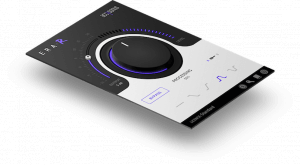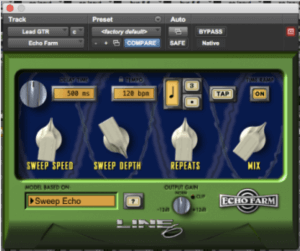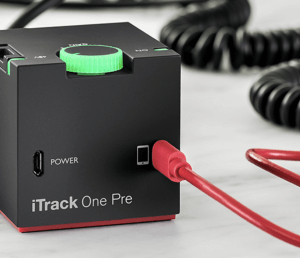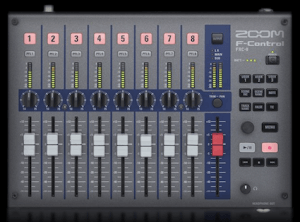 Breathing. It’s a necessary part of the biological process if you want to remain alive. And while the proper application of breathing can add depth and humanity to a recorded piece of singing or spoken-word audio, sometimes it can be a distraction to those who are listening. While it may be possible to simply edit out unwanted breath or breathing-related noises, if you’re working on a long project with a lot of problematic breath sounds, fixing the recording by hand could be a lengthy, tedious task. That’s where a handy audio plugins like DeBreath from Waves comes in:
Breathing. It’s a necessary part of the biological process if you want to remain alive. And while the proper application of breathing can add depth and humanity to a recorded piece of singing or spoken-word audio, sometimes it can be a distraction to those who are listening. While it may be possible to simply edit out unwanted breath or breathing-related noises, if you’re working on a long project with a lot of problematic breath sounds, fixing the recording by hand could be a lengthy, tedious task. That’s where a handy audio plugins like DeBreath from Waves comes in:
Singers insist on breathing – even when it spoils a perfectly good take! With DeBreath, you can truly take their breath away. DeBreath uses a unique algorithm that automatically detects and separates a vocal take into two distinct tracks: only voice and only breath. Now you can control how much breath you want on your vocal track, and how you want it processed. You can even add room tone where breaths have been removed or reduced. And DeBreath isn’t just for singers; it’s also a great time-saver for voice overs and multimedia.
The DeBreath plugin is included with several high-priced bundles from Waves. The plugin is also available as a standalone purchase, normally priced at $99. But DeBreath is currently on sale for a limited time for just $39. Get more information on the plugin by clicking the link at the top of this post.

 In a perfect world, all audio recordings would be made in a controlled studio environment with proper acoustic treatments and sound proofing. That way, the captured audio would be as clean and dry as possible. But, with the proliferation of low-cast audio recording systems, a modern-day recording “studio” could be anything from a cavernous cathedral to a small bathroom. That means that sometimes, the resulting recordings might have some unwanted echo/reverb effects that couldn’t be eliminated at the source. While it’s simple enough to add echo/reverb to a recording afterwards, it’s not always easy to take it away.
In a perfect world, all audio recordings would be made in a controlled studio environment with proper acoustic treatments and sound proofing. That way, the captured audio would be as clean and dry as possible. But, with the proliferation of low-cast audio recording systems, a modern-day recording “studio” could be anything from a cavernous cathedral to a small bathroom. That means that sometimes, the resulting recordings might have some unwanted echo/reverb effects that couldn’t be eliminated at the source. While it’s simple enough to add echo/reverb to a recording afterwards, it’s not always easy to take it away. Audio production professionals can never have enough reverb/echo plugins. These effects can often help turn a good mix into a great one. There are plenty of good free plugins out there for reverb and echo. In fact, most digital audio workstations come preinstalled with decent ‘verb and echo sets of their own. But sometimes, a mix needs more than what the base line can offer. That’s where plugins like Echo Farm from Line 6 come in.
Audio production professionals can never have enough reverb/echo plugins. These effects can often help turn a good mix into a great one. There are plenty of good free plugins out there for reverb and echo. In fact, most digital audio workstations come preinstalled with decent ‘verb and echo sets of their own. But sometimes, a mix needs more than what the base line can offer. That’s where plugins like Echo Farm from Line 6 come in. Smartphones and tablets are more than just communication and consumption devices. They’re high-powered computers capable of doing many of the same things as full-fledged desktop machines. For media producers, that means things like multitrack audio production. And while devices like iPhones and iPads come with built-in microphones that make it possible to record sound, this process can be greatly improved with the addition of a dedicated audio interface. That’s where
Smartphones and tablets are more than just communication and consumption devices. They’re high-powered computers capable of doing many of the same things as full-fledged desktop machines. For media producers, that means things like multitrack audio production. And while devices like iPhones and iPads come with built-in microphones that make it possible to record sound, this process can be greatly improved with the addition of a dedicated audio interface. That’s where  The iPhone has become a valuable tool for media producers. And while the device can do a lot on its own, it can be improved dramatically with external add-ons like microphones. Simply plugging a high-quality, dedicated microphone into an iPhone can raise the sound quality of audio and video recordings noticeably. But, it’s not always easy to find a microphone that’s compatible and/or easy to use with an iPhone. That’s where the
The iPhone has become a valuable tool for media producers. And while the device can do a lot on its own, it can be improved dramatically with external add-ons like microphones. Simply plugging a high-quality, dedicated microphone into an iPhone can raise the sound quality of audio and video recordings noticeably. But, it’s not always easy to find a microphone that’s compatible and/or easy to use with an iPhone. That’s where the  macOS has proven to be an essential tool for media producers. The operating system’s overall stability, combined with its implementation of Core Audio have given media-focused developers a solid foundation for building robust, full-featured media-production applications. But macOS still has some limitations when it comes to the internal routing of audio. Some things can be configured thru the Sound pane in System Preferences. But sometimes, that’s not enough. That’s where SoundSource, an audio routing application from Rogue Amoeba comes in.
macOS has proven to be an essential tool for media producers. The operating system’s overall stability, combined with its implementation of Core Audio have given media-focused developers a solid foundation for building robust, full-featured media-production applications. But macOS still has some limitations when it comes to the internal routing of audio. Some things can be configured thru the Sound pane in System Preferences. But sometimes, that’s not enough. That’s where SoundSource, an audio routing application from Rogue Amoeba comes in. Nobody likes noisy audio tracks. They can be particularly problematic in spoken-word productions. And while it’s obvious that the best way to solve a noise problem is to cut it off at the source, that’s not always an option. Fortunately, there are a number of tools available to audio producers for reducing or (hopefully!) removing unwanted noise from recordings. But even with the variety of these denoising tools available today, there’s still plenty of room left for improvement.
Nobody likes noisy audio tracks. They can be particularly problematic in spoken-word productions. And while it’s obvious that the best way to solve a noise problem is to cut it off at the source, that’s not always an option. Fortunately, there are a number of tools available to audio producers for reducing or (hopefully!) removing unwanted noise from recordings. But even with the variety of these denoising tools available today, there’s still plenty of room left for improvement. Line 6 has been innovating the audio hardware and effects space for decades. The company made a big splash with the release of its latest flagship guitar effects processor, Helix, in 2015. And while the hardware version of Helix has proven to be very popular with musicians, Line 6 identified a need for Helix’s effects outside of an all-in-one piece of gear. That’s why Helix will
Line 6 has been innovating the audio hardware and effects space for decades. The company made a big splash with the release of its latest flagship guitar effects processor, Helix, in 2015. And while the hardware version of Helix has proven to be very popular with musicians, Line 6 identified a need for Helix’s effects outside of an all-in-one piece of gear. That’s why Helix will  Zoom has been a leader in portable audio recording technology for over a decade. The company’s H series of recorders are particularly popular with podcasters and journalists. For remote productions that require more than what the H series can provide, Zoom has developed the F series, specifically the F8 and the F4. These devices provide a level of flexibility that can be extremely useful to those creating multitrack audio. Now, Zoom is taking its F series to a new level with the upcoming
Zoom has been a leader in portable audio recording technology for over a decade. The company’s H series of recorders are particularly popular with podcasters and journalists. For remote productions that require more than what the H series can provide, Zoom has developed the F series, specifically the F8 and the F4. These devices provide a level of flexibility that can be extremely useful to those creating multitrack audio. Now, Zoom is taking its F series to a new level with the upcoming  Musicians and audio producers are always looking for new ways to extend their sonic palettes. For years, creating new sound textures required racks full of hardware, or other effects processors that came in the forms of pedals or dedicated computer applications. But the mobile computing revolution that’s taken hold in recent years with the advent of smartphones and tablets has made it much easier to put powerful audio-processing applications in the palm of your hand. The latest example of this phenomenon comes courtesy of a new iOS app called
Musicians and audio producers are always looking for new ways to extend their sonic palettes. For years, creating new sound textures required racks full of hardware, or other effects processors that came in the forms of pedals or dedicated computer applications. But the mobile computing revolution that’s taken hold in recent years with the advent of smartphones and tablets has made it much easier to put powerful audio-processing applications in the palm of your hand. The latest example of this phenomenon comes courtesy of a new iOS app called